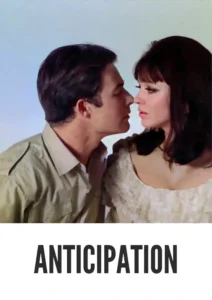Contact: [email protected]
Video Sources 0 Views
- Watch trailer
- The Oldest Profession

Synopsis
Table of Contents
ToggleReview: The Oldest Profession 1967 Full Movie – A Colorful Cinematic Journey through the World’s Oldest Trade

Introduction
The Oldest Profession 1967 stands as a bold exploration of human sexuality and societal norms, offering a provocative glimpse into the lives of women working in the world’s oldest profession. In this article, we’ll delve into the significance of this early colored film, examining its portrayal of prostitution and its impact on the cinematic landscape of the 1960s.
Check The Full Colorized Movies List
Check Our Colorized Movies Trailer Channel
Understanding The Oldest Profession 1967: Director, Cast, and Genre
Directed by the visionary Claude Autant-Lara and featuring an ensemble cast of talented actors, “The Oldest Profession” (1967) deftly navigates the complexities of its subject matter with wit, humor, and compassion. Blending elements of comedy, drama, and social commentary, the film offers a multifaceted exploration of the lives of women engaged in prostitution, challenging societal taboos and conventions along the way.
Exploring the World of The Oldest Profession 1967: Plot and Characters
At its core, “The Oldest Profession” (1967) presents a series of vignettes, each focusing on a different period in history and the experiences of women working in the oldest profession. From ancient Rome to modern-day Paris, the film spans centuries and continents, offering viewers a panoramic view of the often-overlooked role that prostitution has played in shaping human civilization. Through its richly drawn characters and evocative storytelling, the film invites audiences to ponder the complexities of sexuality, power, and exploitation in a world where the line between pleasure and commerce is often blurred.
The Art of Film Colorization
As one of the earliest colored films to tackle the subject of prostitution, The Oldest Profession 1967 employs color to stunning effect, imbuing its scenes with vibrancy and life. By capturing the rich tapestry of human experience in vivid hues, the film invites viewers to immerse themselves in the world of its characters, exploring the nuances of their relationships and the landscapes of their lives with newfound clarity and depth.
Early Colored Films: A Brief History
The history of colored films traces its roots back to the early days of cinema, with filmmakers experimenting with various techniques to add color to their creations. From hand-tinted frames to early Technicolor processes, the evolution of colored film has been marked by innovation and experimentation, paving the way for the development of modern colorization techniques that continue to captivate audiences to this day.
The Oldest Profession 1967 and Its Early Colored Version
The decision to release “The Oldest Profession” (1967) in a colorized format was a bold choice that paid off handsomely, breathing new life into the film and elevating its visual impact to new heights. By presenting its stories in vibrant color, the film adds a layer of authenticity and immediacy to its portrayal of prostitution, drawing viewers into its world with stunning visuals and immersive storytelling.
The Debate Over Film Colorization
The debate over film colorization is a contentious issue that continues to divide audiences and critics alike. While some argue that colorization enhances the viewing experience and introduces classic films to new audiences, others maintain that it compromises the artistic integrity of the original work and diminishes its historical significance. As the debate rages on, filmmakers and audiences alike are left to ponder the merits and drawbacks of colorization in the ever-evolving landscape of cinema.
Examining The Oldest Profession 1967 as an Early Colored Film
As with any colorized classic, the impact of colorization on The Oldest Profession 1967 is a matter of personal interpretation. Some may argue that it enhances the film’s visual appeal and immerses viewers in its world, while others may feel that it detracts from the stark beauty of the original black and white version. Regardless of one’s stance on the issue, there’s no denying the enduring power of “The Oldest Profession” (1967) as a thought-provoking exploration of human sexuality and social mores.
Influence and Legacy: The Oldest Profession 1967’s Impact on Cinema
The Oldest Profession 1967 has left an indelible mark on the world of cinema, inspiring countless filmmakers and sparking conversations about sexuality, power, and exploitation. From its groundbreaking portrayal of prostitution to its innovative use of color, the film continues to resonate with audiences of all ages, reaffirming its status as a timeless classic of the 1960s.
Director’s Cinematic Legacy: Beyond The Oldest Profession 1967
Claude Autant-Lara’s influence extends far beyond “The Oldest Profession” (1967), with a diverse body of work that spans multiple genres and styles. From his early comedies to his later dramas, Autant-Lara’s films are celebrated for their wit, sophistication, and incisive social commentary, solidifying his legacy as one of the preeminent directors of his generation.
Themes Explored in The Oldest Profession 1967
“The Oldest Profession” (1967) delves into a myriad of themes, from the commodification of sexuality to the agency of women in patriarchal societies. Through its episodic structure, the film explores the diverse experiences of women engaged in prostitution, shedding light on the complex interplay of power, desire, and economic necessity that shapes their lives. Themes of exploitation, liberation, and resilience are woven throughout each vignette, challenging viewers to confront their preconceived notions about sex work and the individuals who engage in it.
Reception and Controversy Surrounding The Oldest Profession 1967
Upon its release, “The Oldest Profession” (1967) received a mixed reception from audiences and critics alike. While some praised its bold approach to taboo subject matter and its stunning visual presentation, others criticized its portrayal of prostitution as romanticized or glamorized. The decision to release the film in a colorized format also sparked controversy, with purists arguing that it detracted from the film’s artistic integrity and historical authenticity. Despite these criticisms, “The Oldest Profession” (1967) remains a captivating and thought-provoking exploration of human sexuality and societal norms.
Where to Watch The Oldest Profession 1967 Online
For those interested in experiencing the provocative world of “The Oldest Profession” (1967), the film is available for streaming on various platforms, including Amazon Prime, iTunes, and Google Play. Whether viewed in its original colorized format or the restored black and white version, “The Oldest Profession” (1967) offers viewers a captivating glimpse into the lives of women working in the world’s oldest trade, challenging conventions and sparking conversations about sex, power, and agency.
FAQs About The Oldest Profession 1967
Q: Is “The Oldest Profession” (1967) based on true stories? A: While “The Oldest Profession” (1967) is a fictional film, its vignettes draw inspiration from historical accounts and anecdotes about prostitution throughout the ages. Each segment offers a unique perspective on the experiences of women engaged in sex work, highlighting the diversity of their backgrounds, motivations, and circumstances.
Q: Who are the main actors in The Oldest Profession 1967? A: “The Oldest Profession” (1967) features an ensemble cast of talented actors, including Jeanne Moreau, Raquel Welch, and Michèle Mercier, among others. Each performer brings depth and nuance to their respective roles, breathing life into the diverse array of characters that populate the film’s episodic narrative.
Q: What awards did The Oldest Profession 1967 win? A: While “The Oldest Profession” (1967) did not win any major awards, it remains a notable entry in the cinematic canon for its bold subject matter, innovative storytelling, and stunning visual presentation. The film has garnered a cult following over the years, with audiences praising its thought-provoking exploration of taboo themes and its timeless relevance to contemporary society.
Q: Why was The Oldest Profession 1967 released in a colorized format? A: The decision to release “The Oldest Profession” (1967) in color was made to enhance the visual impact of the film and attract audiences accustomed to modern cinematic techniques. While purists may prefer the original black and white version, the colorized format offers a fresh perspective on the film’s subject matter and allows viewers to engage with its themes in a new and immersive way.
Conclusion
The Oldest Profession 1967 remains a landmark achievement in the realm of cinema, challenging conventions and sparking conversations about sex, power, and agency. Through its innovative storytelling, stunning visuals, and thought-provoking themes, the film invites viewers to reconsider their preconceived notions about prostitution and the individuals who engage in it. Whether viewed in its original black and white format or the early colorized version, “The Oldest Profession” (1967) continues to captivate audiences with its timeless relevance and provocative exploration of human sexuality and societal norms.












